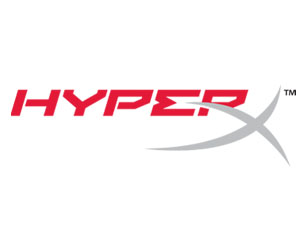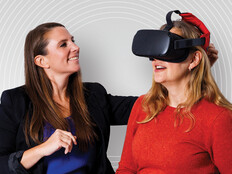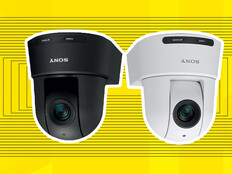Selecting Quality Peripherals and Accessories
Esports often requires powerful computing capabilities and high bandwidth. Acquiring the right equipment and infrastructure can be challenging for higher ed institutions, particularly as the keyboards, mouses, controllers, headphones and microphones used by esports teams must be uniquely designed for the gaming environment.
Players need to weigh performance, design and ergonomics, says Mike Aguilar, director of esports and co-curricular innovation at The University of Oklahoma. Having the right equipment can make or break a gamer’s performance. “Just like any other physical activity, muscle memory in regard to motion, force and frequency is all part of developing skills for high-tier competition in many different titles,” Aguilar says.
Schools that want to compete in esports need to select the right equipment to gain a competitive advantage. Responsive, tactile keys and the ability to clearly listen and communicate are critical for quick reaction, high performance and esports success.
RELATED: Building and expanding esports programs in higher ed.
Mechanical Keyboards
Esports players typically prefer mechanical keyboards with a shorter depth of required keystroke, says Buzzelli. Some of the best keyboards for esports feature a small, compact design that allows more room for the user to make big movements with a mouse. They also tend to be more rigid, built for speed and heavy use that typically exceeds that of typical office and home applications.
“My best advice is to have players demo any new peripherals and provide their feedback. They know better than program administrators what feels and works best,” says Buzzelli.
Some of the top keyboards are made from aircraft-grade aluminum to keep up with the intense action of gaming. The HyperX Alloy Origins mechanical gaming keyboard designed specifically for gaming with HyperX mechanical switches, red, blue and green LEDs and three adjustable keyboard angles. It even allows advanced customization with HyperX NGENUITY software
The type of mouse desired can often depend on the game being played, as DPI, weight, switch and sensor type can all impact performance. The HyperX Pulsefire Haste gaming mouse is customizable with NGENUITY software, features an ultralight hex shell design and boasts a battery life of up to 100 hours.
MORE ON ESPORTS: Creating a popular esports program while supporting student mental health.
Headphones
As they typically need to be worn for long periods, esports headsets must be comfortable and lightweight. These headsets can be wireless or wired and typically feature high-quality surround sound with adjustable ear cups to meet the ergonomic preferences of the gamer.
With more venues returning to in-person events, it’s also essential to ensure headphones are noise-canceling to block pollution from natural noise. “The elevated voices of other people in the space can disrupt focus and a teams’ communicative effectiveness,” says Aguilar.
The HyperX Cloud Alpha pro gaming headset features HyperX dual-chamber drivers for more distinction and less distortion, along with soft red memory foam and a leatherette covering to enhance comfort during marathon gaming sessions. It also features a detachable braided cable with convenient in-line audio control and a detachable noise-canceling microphone.
DISCOVER: Lessons from collegiate esports investments.
Microphones
Though quality headsets often include high-quality microphones, external microphones are also needed for casting and production in esports events. Microphones should have pop filters to control noise and they should be designed for the acoustics of the area where they will be used. “It’s also probably beneficial to invest in a few different types of microphones, depending on your application,” says Buzzelli.
The HyperX SoloCast features plug-and-play audio recording and a tap-to-mute sensor with an LED status indicator. It also features boom arc and microphone stand threading and is compatible with PC, Mac, PlayStation and all major streaming platforms.
FIND OUT: How esports increases enrollment and funding for HBCUs.
Finding the Right Fit for Your Esports Team
While many computers come with their own cost-effective peripherals, making them work for everyone can be a challenge.
“Peripherals come down to a customized level of comfort that is hard to duplicate across gamers and games. Programs should consider letting students use their own peripherals to add to their level of comfort and performance,” says Buzzelli.
Aguilar notes that with any peripherals or equipment, it’s also worth minimizing wires and keeping them out of the way, as “the little things” can often impact gamers’ range of motion.
Brought to you by:











